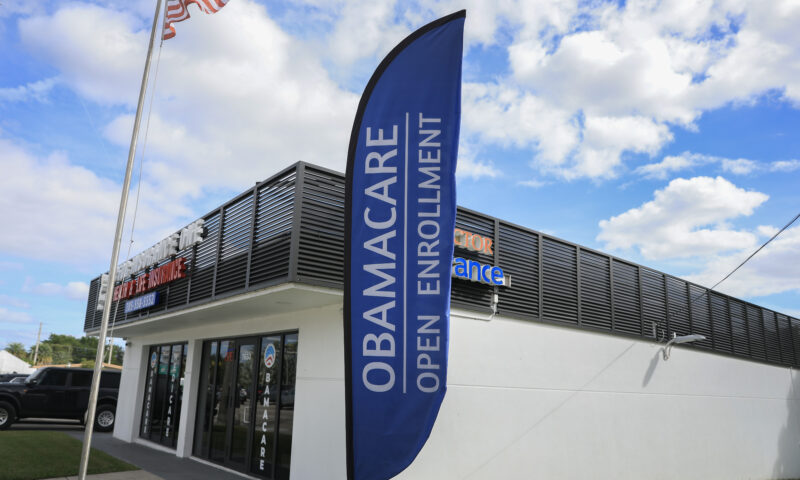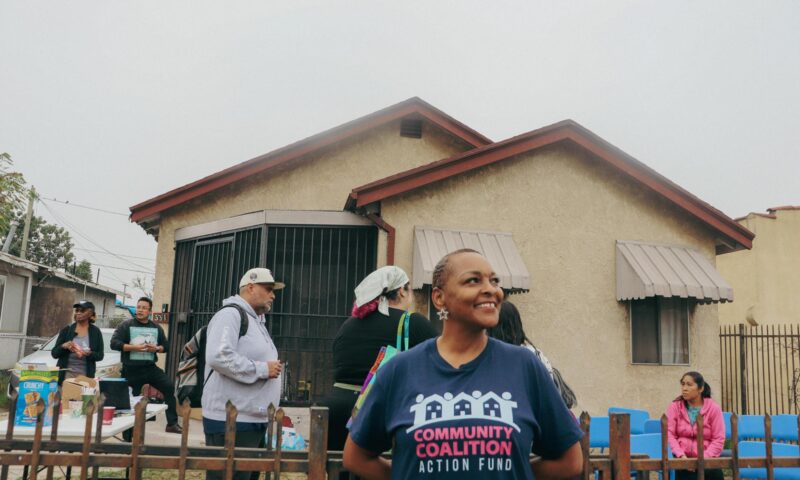When it was placed before voters last November, California’s Proposition 35 sounded straightforward enough: It would use billions of dollars in taxes collected from health insurance plans to increase payments to doctors and others who care for the state’s low-income patients.
In reality, Prop. 35, approved in a landslide, is a remarkably complicated piece of legislation. Rather than fortify important components of Medi-Cal, it has served so far to expose the fissures among factions of the state’s sprawling health care system — and to highlight some of their irritation with Gov. Gavin Newsom.
What it hasn’t done is improve access to care for the 15 million Californians — one of every three people in the state — who rely on Medi-Cal, the state’s version of Medicaid, in order to see a doctor. And it probably won’t do that anytime soon.
That much became clear two weeks ago, when Newsom announced his revised budget proposal for the 2025-26 fiscal year. Included was a plan to claw back about $1.6 billion of Prop. 35 money over the next two years to help reduce the state’s $12 billion budget deficit.
Architects of the plan immediately cried foul, saying voters had approved making that money — an estimated $7 billion to $8 billion a year — off limits to anything but certain designated sectors of Medi-Cal coverage. The list includes raising payments to doctors, reproductive services like Planned Parenthood, mental health care, ambulance services, hospitals and clinics that care for low-income patients.
“We believe [Newsom’s] proposal to swipe Proposition 35 funds in order to backfill the state’s budget is not only a direct violation of state law, but also a snub to the millions of California voters — 68% — who supported this ballot measure last fall,” said Carmela Coyle, president of the California Hospital Association, a powerful industry lobbying group that helped write the proposition.
At a budget briefing a few days after his revised proposal, Newsom asserted that the move is “absolutely consistent” with the the language of the initiative itself, convoluted though it is. It may come down to the California State Legislature’s own final budgeting process — or a legal challenge — to sort it out.
And in the meantime? Medi-Cal soldiers on, with not enough doctors participating and not enough money to pay for the program’s cost.
* * *
California has faced a Medi-Cal double whammy in recent years. The cost of the program itself has skyrocketed to a projected $161 billion for 2024-25. That’s because more people enrolled under Affordable Care Act expansions, Newsom enlarged the program to include residents regardless of their immigration status, and — says the nonpartisan Legislative Analyst’s Office — the advent of Prop. 35 itself drove up projected costs by another several billion dollars a year.
At the same time, the state’s comparatively low reimbursement rates for Medi-Cal services have led to fewer doctors, mental health professionals and other providers accepting those patients. California often pays Medi-Cal providers only 70% or 80% of what the federal Medicare program pays for the same services. Result: way too few providers available for the millions who use Medi-Cal, a problem that can be deeply felt in rural areas of the state where there is already limited access to care.
On its face, Prop. 35 appears to address that directly. It says that billions in special-tax money already being paid by MCOs, or managed care organizations (like Kaiser Permanente or Anthem Blue Cross), has to be spent on these increased payments to providers, clinics and hospitals. In theory, paying better rates will encourage more doctors to take on Medi-Cal patients.
Alas, it’s nowhere near that simple. First, the initiative decrees that the MCO tax, which began in 2005 and has required reauthorization every few years, become permanent starting in 2027. The requirements it places on how the money can be spent also means lawmakers couldn’t use the revenue to ease the burden of the Medi-Cal program on the state’s general fund, as they’ve done for years going back well before Newsom took office.
And the federal government, which matches the MCO tax with dollar for dollar funding, already warned the state back in 2023 that it could receive less in the years to come — a grim development, with California facing likely budget deficits annually.
The restrictions of Prop. 35 mean that California legislators can’t make thoughtful year-to-year adjustments on spending based on financial projections for the state, which is exactly what they’re elected to do. (In politics, the term for a measure like this is ballot-box legislation.) It’s perhaps no surprise that Newsom, while never formally opposing the initiative, openly spoke against it in the months leading up to the November 2024 election.
“This hamstrings our ability to have the kind of flexibility that’s required at the moment we’re living in,” the governor said during a press briefing last summer. “I haven’t come out publicly against it. But I’m implying a point of view. Perhaps you can read between those many, many lines.”
This year, the governor went steps further. First, his administration failed to submit federal paperwork to get the process rolling, although a spokesperson for the California Department of Health Care Services told Capital & Main this week that the state is still on schedule with its proposals to the federal government. Then came Newsom’s revised budget.
* * *
Proposition 35 was the result of months of intense negotiations among health industry powers — the California Hospital Association, the California Medical Association, Planned Parenthood and many others — that often view one another as competitors for state funding during the budgeting process. Its passage was hailed as a boost for Medi-Cal at a time when the need for its services remains acute.
Their initiative, though, wasn’t a win for everyone. It directs that MCO tax money be used to bump payments largely for primary and specialty care, family planning, mental health services, prescription drugs and emergency/ambulance services. (One such service provider, Global Medical Response Inc., was the second-largest donor to the $50 million Yes on 35 campaign.) Community health workers, private duty nurses and certain forms of Medi-Cal coverage, such as continuous care for eligible children up to age 5, aren’t included.
Now, it’s uncertain how this process plays out. If Newsom’s proposal is approved by legislators, a significant chunk of Prop. 35 money will be used to loosen the state’s budget squeeze — and set a precedent for future years. That prospect has longtime supporters of the governor publicly protesting.
“To put it simply, these cuts are plain cruel,” said Jodi Hicks, CEO of Planned Parenthood Affiliates of California, which faced a second blow in Newsom’s budget revise when the governor proposed using $500 million earmarked for family planning services to instead help offset the deficit. “With this budget revision, Gov. Newsom is effectively defunding Planned Parenthood in the state of California.”
As with the patients of many other health service organizations in the state, Planned Parenthood’s overwhelmingly rely on Medi-Cal for their coverage. It is a common theme and one thread of a continuously complicated health care story — one that will almost certainly get messier.
Copyright 2025 Capital & Main


 The SlickNovember 14, 2025
The SlickNovember 14, 2025
 Latest NewsNovember 11, 2025
Latest NewsNovember 11, 2025
 The SlickNovember 12, 2025
The SlickNovember 12, 2025
 Column - State of InequalityNovember 13, 2025
Column - State of InequalityNovember 13, 2025
 Latest NewsNovember 19, 2025
Latest NewsNovember 19, 2025
 Latest NewsNovember 18, 2025
Latest NewsNovember 18, 2025
 Latest NewsNovember 17, 2025
Latest NewsNovember 17, 2025
 The SlickNovember 18, 2025
The SlickNovember 18, 2025

